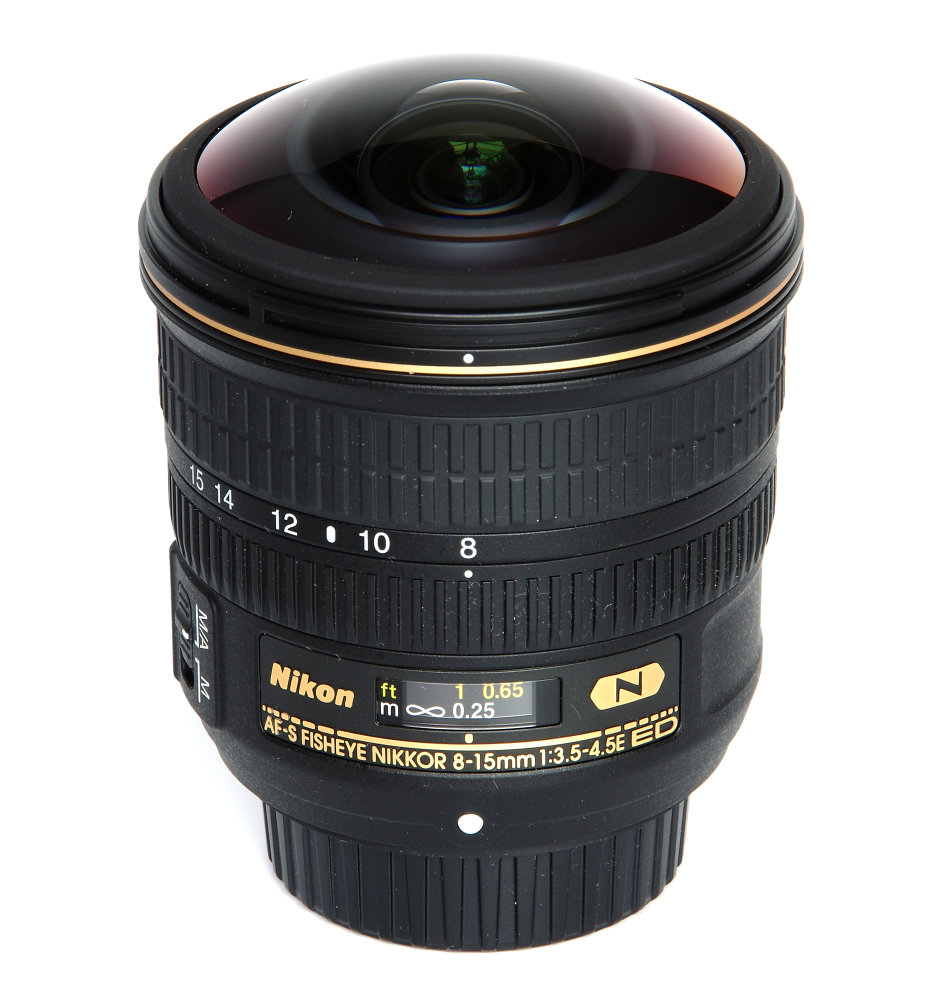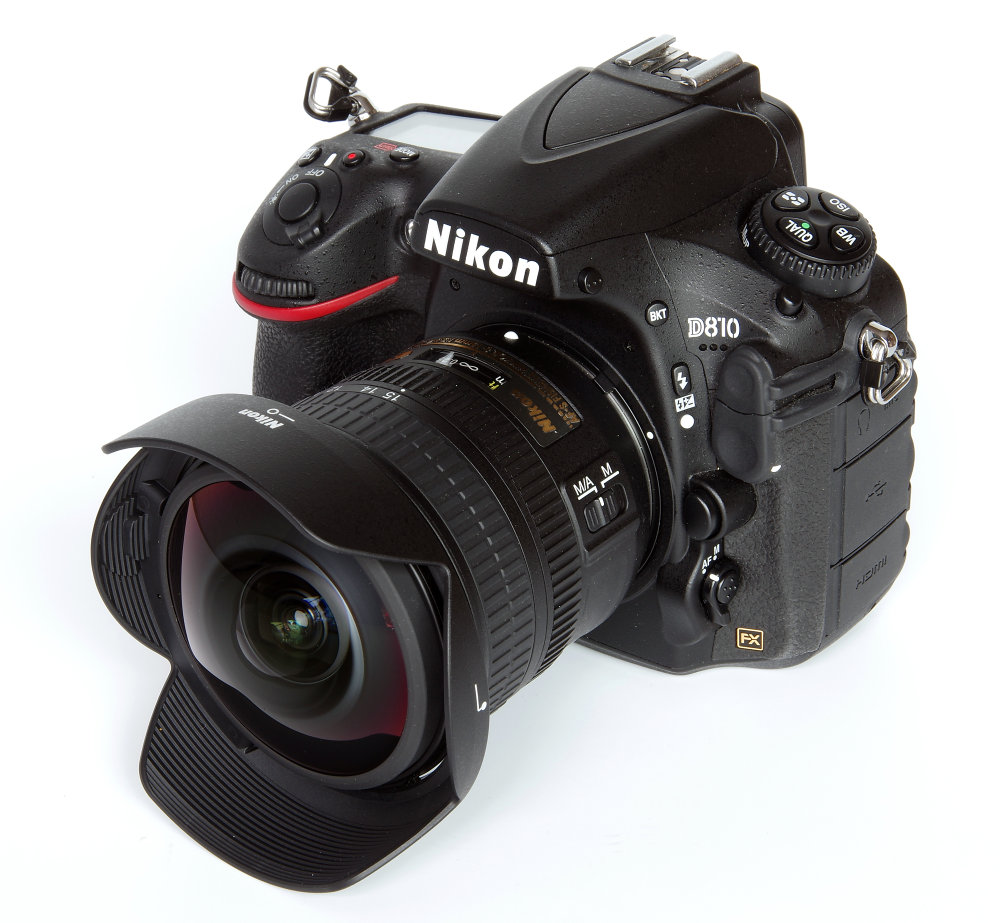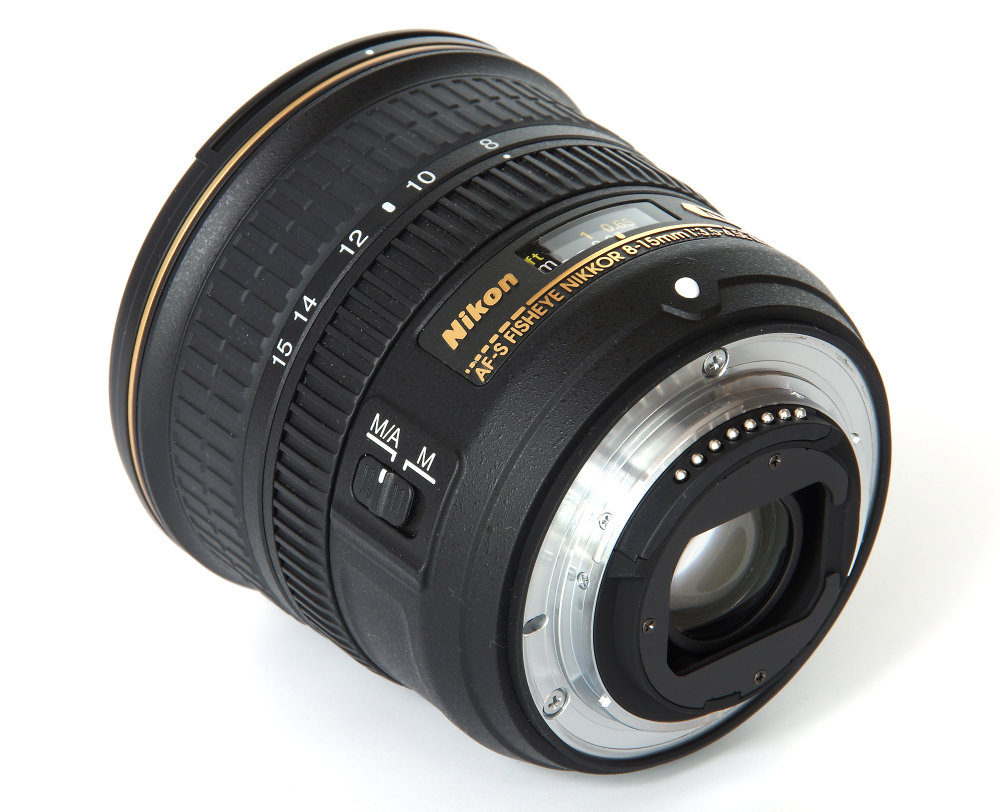Nikon AF-S FISHEYE NIKKOR 8-15mm f/3.5-4.5E ED Review
Nikon AF-S FISHEYE NIKKOR 8-15mm f/3.5-4.5E Handling and Features
First, the technical bit. Fisheye lenses come in various types, the obvious one being that they can offer circular or full frame images. This zoom offers both, on full frame sensors a 180 to 175-degree image and on APS-C 180 to 110 degrees. There is also the question of the projection of the image, much in the same way that maps have a projection to put a round globe onto a flat piece of paper. This lens is the most commonly used type and has an equisolid angle (equal area) mapping function. A Google search will find the mathematics of this for those who wish to pursue it further.
The clever ergonomic design starts with the lens hood/lens cap. At 15mm the image is full frame and the lens hood can be used. The cap is removed for this. At anything less than this, the hood causes vignetting, so has to be removed. The clever bit is that the cap has a cutout for the lens hood release catch, so at 8mm to 14mm hood and cap can be removed as a discrete unit. This is incredibly useful as when not in use protecting the bulbous front element is a good idea. This is all beautifully engineered and as smooth as silk.
The front element is bulbous and exposed when the hood is removed, but there's no answer to that as there is no possibility of fitting filters. There is a slot at the back of the lens where gelatin filters can be inserted. Front and rear elements are fluorine coated to repel dirt, grease and water. Nano crystal coatings are applied to all elements to reduce flare, and indeed are very good at doing so as resistance to flare is excellent.
Optical construction is 15 elements in 13 groups, with 3 ED (Extra Low Dispersion) and 2 Aspherical. The diaphragm has 7 rounded blades and is electromagnetic. This improves the accuracy of the set aperture but does mean that older bodies may not be supported. In this case, the lens will operate at full aperture only.
The lens is “dust and drip” resistance, a delightfully vague phrase but it gives me the confidence to take the lens out in light rain or other poor weather conditions.
Closest to the front of the lens is the zoom ring, clearly marked and having an ultra-smooth feel to it with just the right amount of resistance. There is a mark between 10mm and 12mm and this is the full frame indication for DX format cameras. The instructions stress that this is approximate only and that the viewfinder image should be checked carefully. The point is well taken generally. Lest there be some confusion, the references to “full frame” in the context of this lens are that the image fills the picture area, be it in 35mm format camera terms or in APS-C crop sensor camera terms. In contrast, the round fisheye image is surrounded by black. This can clearly be seen in the sample images. As we zoom from 8mm to 15mm the image fills more and more of the frame, and there are sample pictures of that.
IF (Internal Focusing) is fast and locks on with precision, silently driven by SWM (Silent Wave Motor), focusing down to 0.16m (0.5 feet). This is a maximum magnification of 0.34x, equating to a subject just three inches from the front element. There is a full-time manual override of the AF system available. The manual focusing ring is fairly slim but smooth and effective.
Finally, closest to the camera body we have the AF/MF switch and the focusing scale, the latter being under a clear window. There is no depth of field scale. The AF switch has two settings. M/A is for AF with manual override and M is for manual focus. With very wide lenses finding the manual focus point can be tricky, but the electronic confirmation beep from the camera assists with this. It is probably far easier to use AF and reserve the right to tweak that manually as required.
Fisheye lenses are great, but when overused can become a little predictable. Nikon's Capture NX-D software is available and will enable the use of the images as a rectilinear ultra-wide. This was not provided for testing.
We soon learn to watch out for feet and tripod legs with this lens, but apart from taking more care with composition, this is a very exciting lens to use. More than ever the mantra is get in close, then closer, closer, closer.....then some fantastic compositions can be made. The fisheye is maybe not for everyone, but with practice, it can yield some impressive results.
It's also worth noting that under some circumstances the fisheye effect cannot be seen. This particularly applies to landscapes, where the image will look almost entirely normal as long as the horizon goes right across the centre of the picture.
Add your message
Please login here or if you've not registered, you can register here. Registering is safe, quick and free.
photodo Stats
428 MTF tests
74 in-depth photodo reviews
100+ users join each day
Help the lens community by reviewing or rating a lens today via our lens search
Latest Lens Reviews
- Chinon 28mm f/2.8 Vintage Lens Review
- Canon EF 70-200mm f/4L IS II USM Lens Review
- Samyang AF 85mm f/1.4 EF Review
- Sigma 70mm f/2.8 DG Macro Art Review
- Samyang AF 24mm f/2.8 FE Review
- Meike 50mm f/1.7 Review
- Tamron 70-210mm f/4 Di VC USD Review
- Lensbaby Burnside 35mm f/2.8 Review
- Asahi Super Takumar 50mm f/1.4 Review
- Asahi Super-Multi-Coated Takumar 135mm f/3.5 Review



